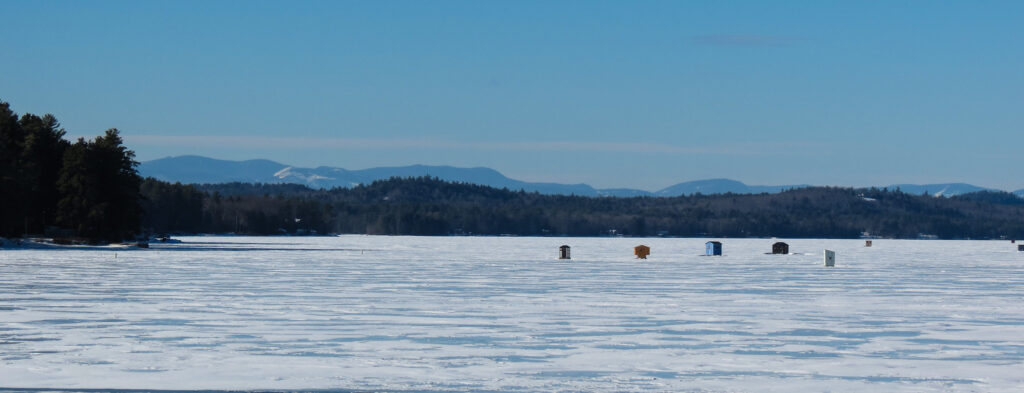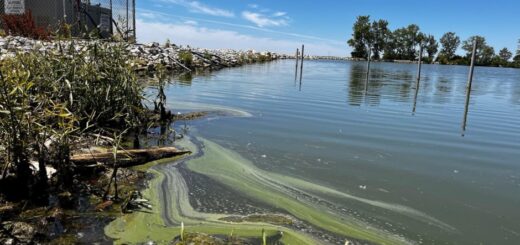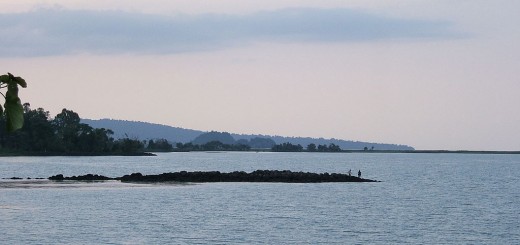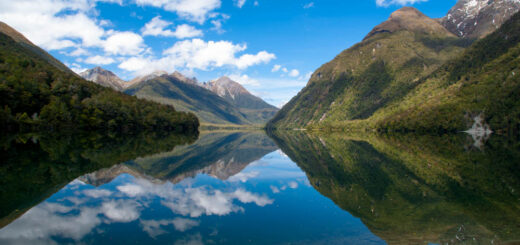Research Brief: Monitoring Lake Ice Formation and Structure Under Heavy Snowfall
1Understanding the formation and structure of lake ice is important in regions that rely on frozen lakes for seasonal transportation infrastructure and recreation. As a result, studying the evolution of lake ice is critical to informing communities when traversal on the lake is safe and preventing breakthrough accidents.
A 2023 study presented at the Committee on River Ice Processes and the Environment’s 22nd Workshop on the Hydraulics of Ice Covered Rivers focused on observing the evolution of lake ice over the winter. In particular, the study sought to better understand how heavy snowfall impacts freeze-up and ice structure.1

Ice fishing on Long Lake, Maine. (Credit: Bob Travis via Flickr CC BY-NC 2.0)
Methods
In October of 2022, the team deployed a floating research station in the deeper part of a subarctic lake in the Yellowknife region, Landing Lake. A Snow and Ice Mass Balance Apparatus (SIMBA) was installed on the raft along with a thermistor chain comprised of 145 sensors spaced every 2 cm.
Two vertical wooden planks were affixed to the raft and extended into the water. One of which housed six HOBO TidbiT MX400, which monitored water and ice temperatures at a 5-minute interval. The second plank supported two photosynthetically active radiation loggers, which recorded data every 15 minutes.
Below the raft, a small structure was deployed on the lake bed to measure temperature immediately above the lake bed. Water temperature data was logged every 5 minutes using four HOBO TidbiT MX400, and water level was recorded by a HOBO U20 pressure transducer on an hourly basis.1
In order to compare a low and heavy snowfall year, two time periods were observed—November-December 2021 and October-December 2022.
Meteorological data for both years were pulled from an existing meteorological station operated by Environment and Climate Change Canada that was near the floating station (~250 m away). The 2021 ice formation data was measured by a SIMBA deployed earlier in the winter season and located ~500 m southwest of the 2022 floating station.
Results
In 2021, freeze-up was estimated to occur on November 4thfollowing significantly warm air temperature throughout October. The following freeze-up was extremely rapid, reaching 19.4 cm by November 24th and 35 cm by December 6th.
In contrast, in 2022, freeze-up occurred nearly 2 weeks earlier on October 23rd but was followed by heavy snowfall, which delayed the growth of congelation ice. Instead, snow ice formed, and the two years had similar ice thickness in December.
Due to the bearing capacity of snow-ice being lower than congelation ice, increases in the frequency and severity of snowfall during the winter months could make lake ice traversal more dangerous. As a result, the study concludes that should an increasing trend in November snowfall in Yellowknife continue, ice cover in the early winter may change and become less stable.
Source
- Rafat, Arash & Kheyrollah Pour, Homa. (2023). Monitoring the formation and growth of lake ice under heavy snowfall.














[…] 2024 study published in Limnology and Oceanography Letters examined how snow cover drives under-ice thermal dynamics throughout the winter on a small dystrophic […]